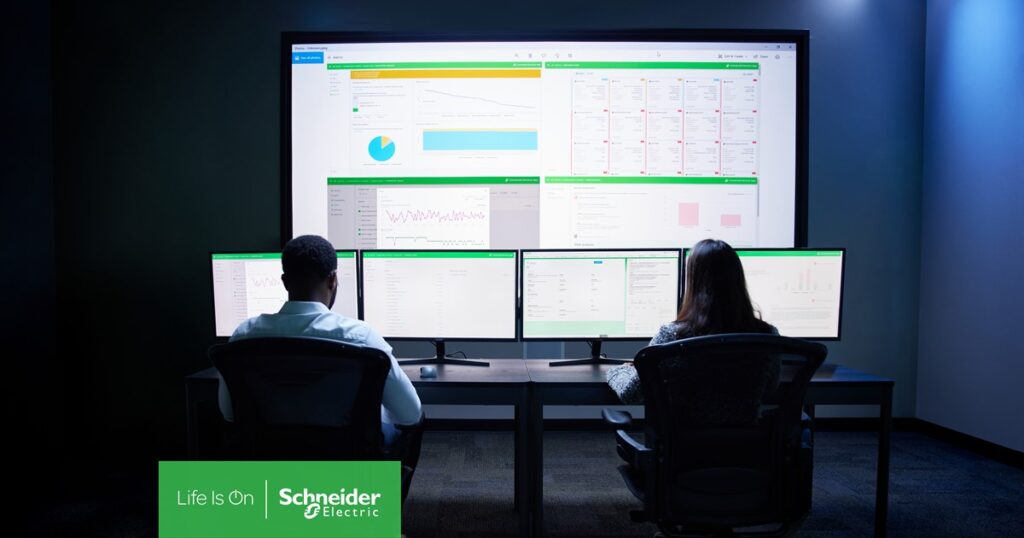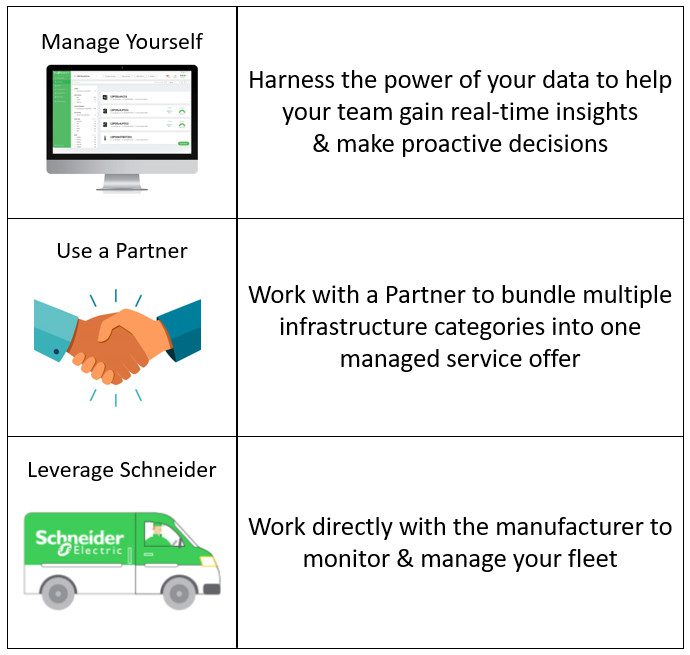CIOs are increasingly finding themselves needing to manage and address the challenges of distributed IT infrastructure, which has grown in demand due to the rise of edge computing deployments. The market size for this type of infrastructure is expected to increase from $11.24 billion in 2022 to $155.9 billion by 2030 (1). As reflected in this blog post, this growth makes it challenging for CIOs to ensure resiliency, cybersecurity, and sustainability across their entire IT ecosystem, particularly as the pandemic has further accelerated the demand for real-time adjustments to ensure uptime at remote sites.
A new question arises: How can I proactively manage my edge computing infrastructure to gain back time for my team without sacrificing resiliency, cybersecurity, and sustainability?
One way to proactively manage edge infrastructure is to gain a clear view into the health and age of the infrastructure, enabling data-driven decision making. To do this, CIOs can follow three steps: digitize the fleet to create a digital twin of the infrastructure, assess the state of the fleet to identify pain points and gauge sustainability, then decide on a course of action based on the organization’s unique situation and sustainability goals. This article’s purpose is to help CIOs navigate those steps.

1. Digitize
The first step in the journey is to digitize the fleet and create your digital twin. This step involves bringing all assets out of the dark and onto the network. To do this, devices must be able to communicate. The addition of an SNMP network card can digitize any uninterruptible power supply (UPS) unit. Once online, the data can then be pulled into a cloud software, such as EcoStruxure IT Expert, where infrastructure data is assembled and accessed.
This connection now brings cyber risks into the conversation. Software has unlocked the ability to create a digital twin of your infrastructure. It is important that the tool to create the twin has the highest cybersecurity standards. If hosted in the cloud, it is important to verify that the cloud provider has the correct certifications related to your business needs such as the following: ISO 27001, HIPAA, FedRAMP, SOC 1, or SOC 2 certifications. This twin is then the foundation of assessing edge computing infrastructure health and efficiency.

2. Assess
Once the digital twin is created, we are now able to assess the state of the fleet. This is a step full of questions:
- What are my healthiest and unhealthiest assets?
- Which assets need to be replaced?
- Which assets qualify for services?
- Which assets are operating at optimal efficiency?
- What assets take the most resources to remediate?
- Where is the greatest concentration of assets?
Answering these questions helps to paint a holistic view of where your fleet stands. The view exposes pain points in your fleet that need to be addressed to avoid unnecessary costs and labor usage in the future. The data also helps to frame how sustainable your IT footprint really is by accessing efficiency and carbon metrics. Now that these pain points are identified, it is time to leverage the data and assessments to decide how to manage more proactively moving forward.
3. Decide
Decisions now need to be made regarding your assets. There is no one-size-fits-all for organizations. It is up to you how hands-off or hands-on you would like to be based on your financial and labor situation. The cost-effectiveness of these decisions is relative to each organization’s unique situation. If your team is stretched on time, then outsourcing the management of edge computing assets will buy you back time and reduce cost volatility, shifting towards an OpEx model. If labor is not the issue, the software can be leveraged for automation and custom dashboards to improve your team’s effectiveness.
Here are a few options to help you decide:

Decisions also need to be made related to your sustainability goals. Efficiency improvement opportunities can be easily spotted within your digital twin. The improvements will result in a reduction of carbon and energy costs for the organization. This can be done through outsourcing, leveraging software for automations and custom dashboards, or a combination of both. Schneider Electric’s Edge UPS Fleet Management Comparison Calculator is a great resource to help you decide.
These decisions will help you establish control over your hybrid IT ecosystem. Without the digital twin, it is impossible to be proactive while being efficient. The hardest and most important step is the first: Gaining Visibility. Once visibility is gained, the remaining steps fall into place. You now have the power to make data-driven decisions. By taking these steps, CIOs gain control over their distributed IT and improve resiliency, cybersecurity, and sustainability.
To learn more, explore this video along with our EcoStruxure IT solution. As always, don’t hesitate to contact us.
Sources:
1 – Grandview Research – https://www.grandviewresearch.com/industry-analysis/edge-computing-market


